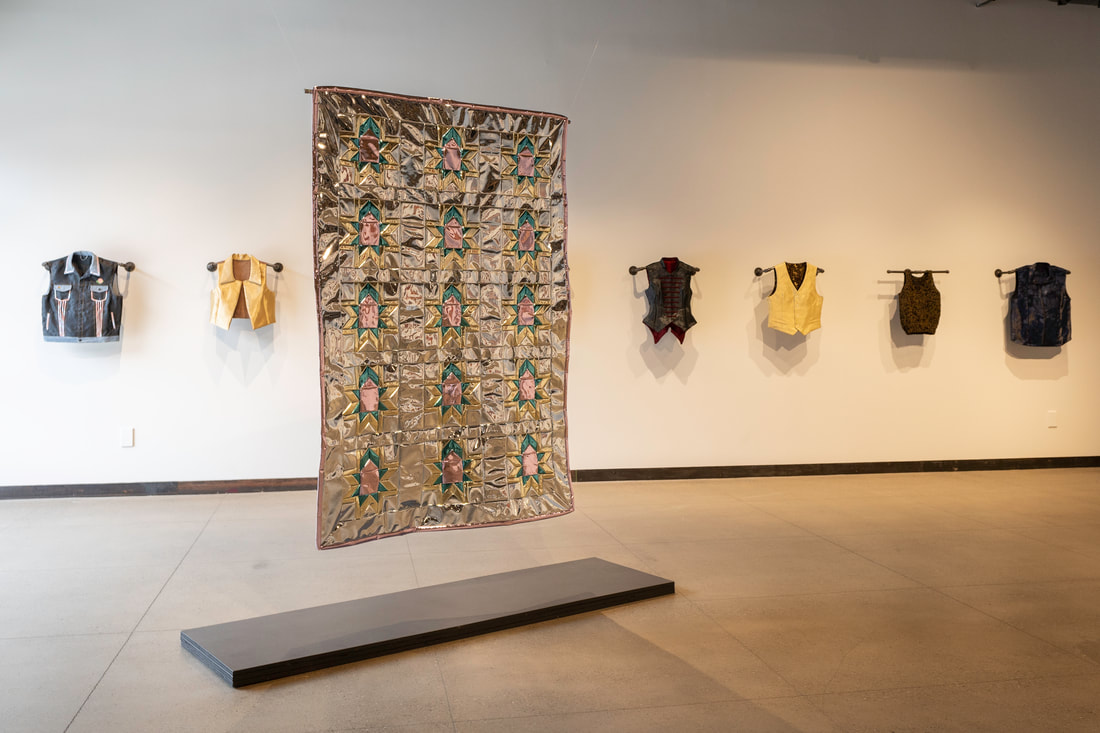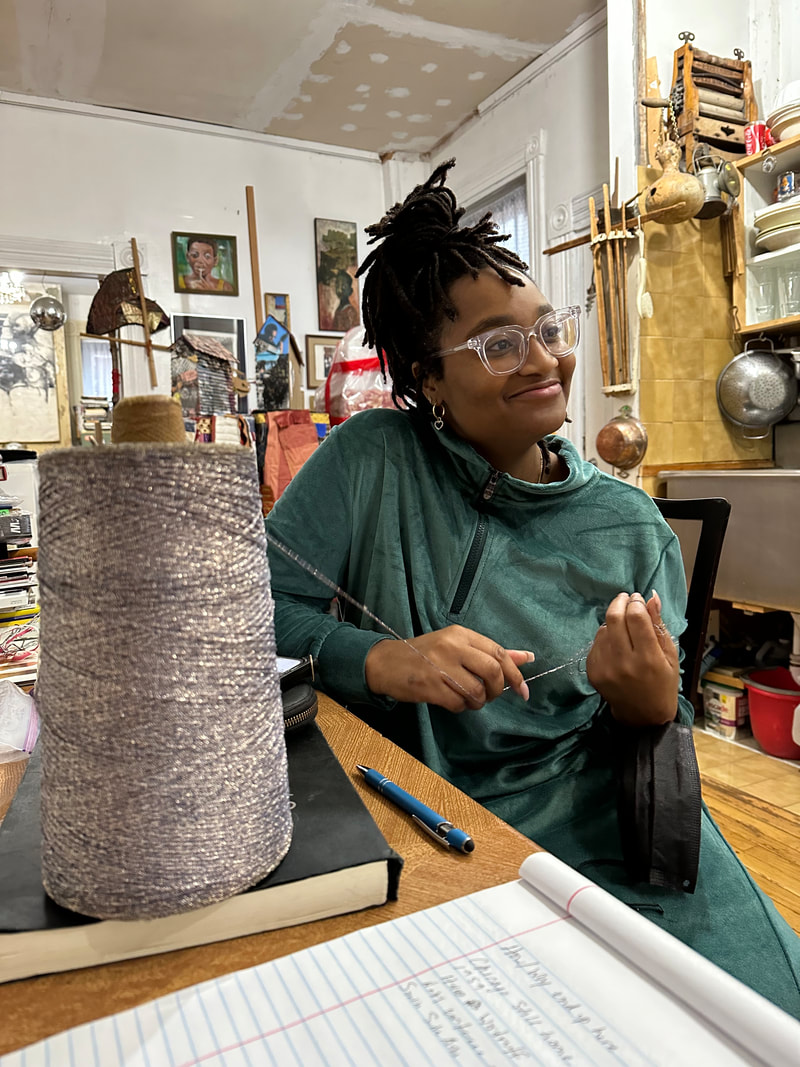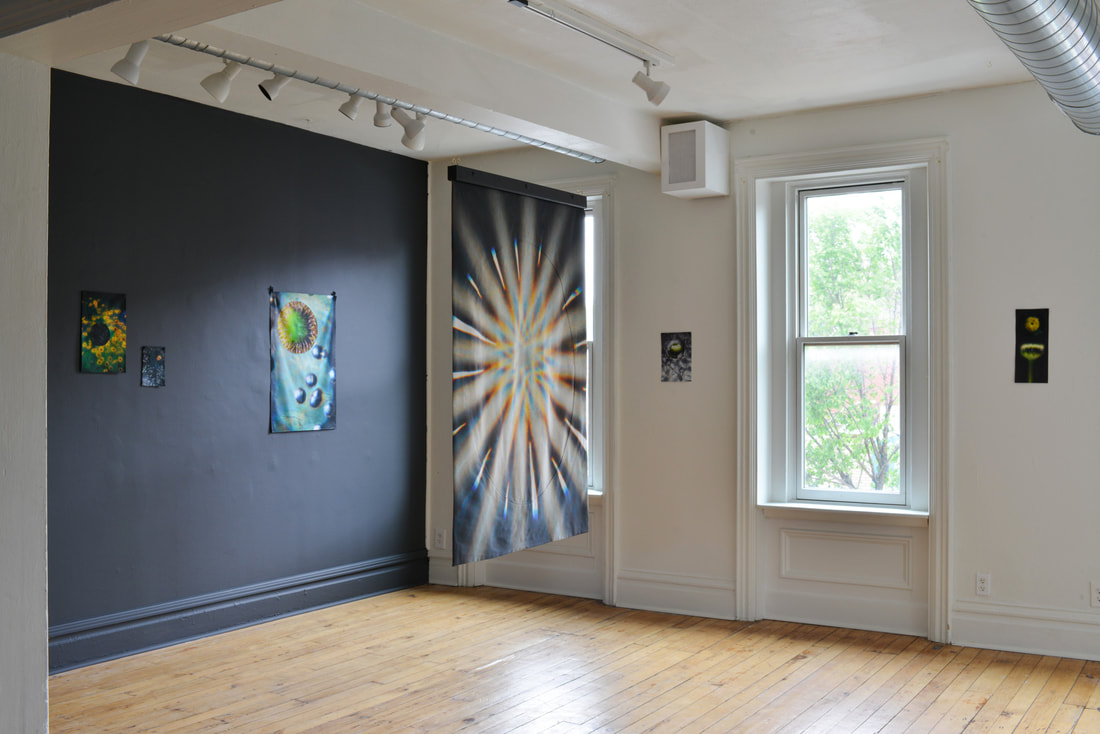“The future is a choice between Utopia and Oblivion,” proclaimed the architect, theorist, and futurist, Buckminster Fuller, “Whether it is to be Utopia or Oblivion will be a touch and go relay race right up to the final moment…Humanity is ‘in final exam’ as to whether or not it qualifies for continuance in Universe.” Five decades later, with the world presumably still at its desk, Kevin Clancy has cut these words into reflective acrylic, and invites us to see a future beyond the final moment.
The future is alluring upon arrival. A glow of magenta light emanates from the three second-story windows of 5106 Penn Avenue. Greeted by the slightly eerie, slightly calming electronic soundscape composed by John Also Bennett, we might have just landed at an Apple Store in the Twilight Zone. The domestic interior of the gallery, with its uneven hardwood floors, slices of exposed brick, and fireplace, is now a space that is not entirely in this world or the next.
The gridded walls and built-out bays backlit by LED lighting, mimic commercial displays offering a bevy of plaster cast faces, hands, and phones. A sterile alcove is built into the fireplace, housing a pair of floating hands holding an ironically torched burner phone (2019). Pink and green light blaze through the film-covered windows, engulfing the white washed gallery in gentle hues, while saturated tones and mirrored images bounce off the dichroic film lining the series of plaster cast electronic devices. Neons, visual echoes, and seductive sculptures entice us, but this feels far from a utopia.
Clancy uses low-tech sculptural processes of plaster casting found readymade objects to examine information technologies of today and tomorrow. He delves into the subject of Internet culture without directly engaging with the software that defines it. We are viewing a museum of our technological past from a future moment in time, or a “speculative museum of natural history,” as Clancy states.
He comes at his work as a millennial consumer, not a technologist, programmer, cryptographer, or hacker. This exhibition is for and about the consumer. Those whose phones are the last thing they check before sleep and the first thing they grab when rising. Those who enjoy the benefits of having the Internet in their pocket but are skeptical about its utopic potential. This exhibition is also for those of us in Pittsburgh, a Rust-Belt city turned tech hub. Those who are trying to manage their enthusiasm for the rebirth of a city endowed to another big industry. Will we tour the National Robotics Engineering Center like we now tour Carrie Blast Furnace?
In Clancy’s museum, each of the grids loosely advertises a theme of technological exploration. We have DEAD (2018-2019) where the grid parades skeletal extremities dancing on plaster cast iPads: without their armor the iPads’ fragile bodies would shatter instantly. The assemblage of cast and ready-made devices confuse the eye, creating an uncertainty for what is real and what is a copy, a reference to the world lived both on and offline.
In hollow holo (2019) a grid shows hands attempting to embrace through a screen and hands holding phones of the future. The screens are not black but luminous mirrors; we get caught in the act of looking and become part of the narrative. A “how to” on “how to interact with your phone,” Clancy memorializes the various awkward yet familiar gestures that are so ingrained in our day-to-day. The phone has become an extension of the hand, with the hand now catering to the phones particularities. Clancy continues to ask what the value of increased digital connection is when physical connection is gone.
Plaster cast artifacts preserve the vestiges of the animate and inanimate; flesh and hardware remembered in history as one and the same. What is lost and what remains when we take the digital out of the physical? An object whose lifespan conveniently expires to ensure we have not missed too many of the latest models. Once the technology stops working, the objects are merely ephemera, an artifact of a historical moment. aether net (2019) aestheticizes the seemingly mundane ancillary Ethernet cables, USB cords, and iPhone chargers that Clancy finds on walks across the Bloomfield Bridge and in electronic dumpsters around the city. In this world, they are displayed as coveted heirlooms woven into intricate patterns and sacred knots. Presenting us with monuments of the present that will soon feel outdated, Clancy encourages us to take time to consider the technological moment of today, one that will, left to its own devices, push us into tomorrow.
If this show were produced a decade ago, what would we see? Razrs, Blackberries, Ipods? What about two decades ago? Antennae cell phones, pagers, Walkmen? There was a time before the cloud when information would expire with the device that lodged it. Now, data is accumulated and saved on databases and servers we cannot see and often cannot control. In machine unlearning (2019), Clancy addresses how surveillance has magnified with the advancement of machine learning. The grid exhibits a series of cast faces and hands dotted and lined with markers of facial and fingerprint recognition technology. Neon orange strings form a visual analogue, tracing the geometric points of connection along the corporeal landmarks. The invisible weapons of biometric surveillance are made visible through the glowing green rods and pins that strike the silhouettes.
A hand is clad with SIM cards; a surgical glove is cast into a balloon hand splattered with yellow paint; another hand wears a surgical glove – as smooth and delicate as Renaissance drapery in carved stone. Clancy, here and throughout the show, uses tricks of the eye, dark humor, and deft craft to confront the dystopic realities of technological acceleration. Eventually though, the super-saturation of color and the no-longer-slightly-calming-sound catches up to us, generating a mounting feeling of unease.
Clancy’s thesis, dark web/bright web (2019), presents the most conspicuous juxtaposition between utopia and oblivion. In the dark web hands crush cracking phones, a translucent keyboard protector loses shape, fingers are finally able to break through screens. Two riot handcuffs are fastened into the shape of the command key ⌘ a nod to the protesters calling for an end to the government’s use of surveillance technology. The prosthetic eyeballs affixed to a cast iPhone remind us of our fishbowl existence, watched not just by artificial intelligence, but by the people behind those systems. The cracked, water damaged, and burnt devices signal the Internet as a place of violence, a mechanism of control in the hands of shattered factional interests, overlapping and clawing, with many left to its margins, oppressed and forgotten, but never unseen.
The bright web is only a bit brighter. There is homage to Fuller’s geodesic dome, geometrically akin to the facial recognition patterns lining the face casts and the laser etched acrylic spider webs. In it, the argument for utopia reads as intentionally weak. Broken and dismembered fingers and casts of babies’ hands rest on top of phones – a hand too young to feed itself let alone navigate technology. Children born into a world where opting out is not an option. The narrative of the Internet as a democratic tool that could lead to cyber-libertarian utopias has come and gone. We are too aware, yet too complacent, of how our privacy rights are compromised by the tracking device glued to our hands and the digital footprint always lingering behind us.
Still, amongst the manufactured grids, found electronics, and cast relics, nuances of humanity seep in. With close inspection one observes a cast swirl of hair caught in a facial mask, and fingerprints and palm creases marking the cast hands. Some hands adorn rings, others have chipped nails – slight details emerge from the artificial cloak of anonymity to reveal layers of accountability. Through the flashes of individuality – both within the people who lend their hands and the artist who lends this imaginative world, comes the slightest beacon of hope that Utopia or simply “continuance in Universe,” can endure.
And we are back to the choice: Utopia or Oblivion. As the exam clock ticks on, we may lift our heads and choose to see the exhibition as a cautionary tale, a tale of the passive consumer who can only view this moment from a museum in a dystopic future. We are presented with the opportunity to observe this moment in the moment, and take with that what we will.


